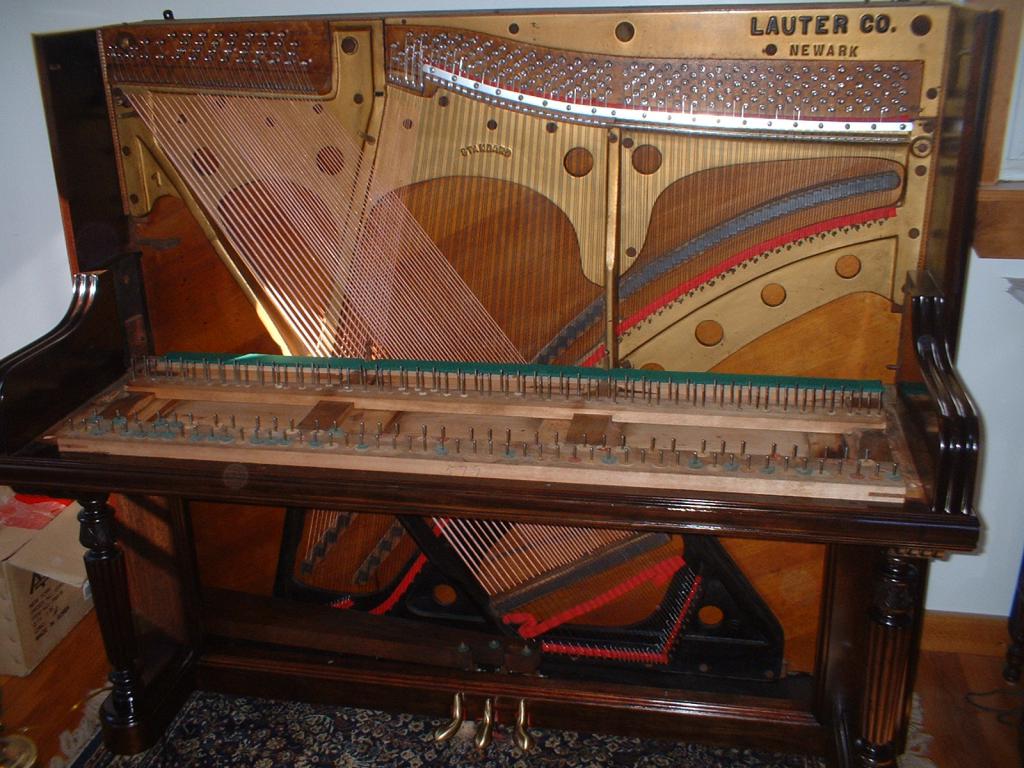Any piano owner will sooner or later face the need for a partial or complete analysis of the instrument. How to disassemble a piano? It all depends on why this is done.
Partially, the piano is disassembled for cleaning, since the accumulated dust can cause sticking or dull sound of the keys, tuning, because over time the strings are weakened and the instrument ceases to “build”. For transportation, you can also partially disassemble the tool. A complete analysis of the piano is needed for its disposal. Therefore, almost all the owners of a rare instrument raises the question of how to disassemble the piano.
Disassemble the piano to tune and remove dust
To clean and set up the tool, it is enough to open the top cover. Then the front panel is removed, behind which hammers and strings are hidden. It is fixed with wooden latches located inside the right and left. In order to release it, just lower the latches down. Then you need to remove the hinged lid that covers the keys. This part is not fixed, and to remove it, you only need to gently pull it towards you, holding the front movable bar, remove and place it vertically. The strap pressing the keys is fastened with two bolts that need to be unscrewed and also removed. This parsing is enough to tune the tool.
To clean the tool from dust and eliminate sticky keys, you need to manually pull out the keys and put them on a flat surface in order, so that later you can easily put the keys in place.
Then the lower front cover is removed. It, like the top one, is held by wooden plugs. For convenience, the wooden rods that drive the pedals are also removed. Often this is enough to clean the piano from dust and debris that accumulates during use. Everything must be done very carefully so as not to damage the mechanism. In this case, dust and debris can be removed without removing the hammer mechanism, but simply by carefully separating the mallets one at a time from the strings, wipe them.
Dismantling for repair
If it is necessary to change a broken string, a hammer, a gasket on a string or other failed part, you will also have to remove the hammer mechanism. It is attached to the side panels with 2 bolts. Unscrewing the bolts, gently holding, it is necessary to separate the hammers from the strings. It is preferable to remove the mechanism in a horizontal position, pulling it out through the top, and put it vertically in a convenient place. With proper and accurate analysis it will not be difficult to put all the mechanisms in place. Before disassembling the piano, it is necessary to prepare a place for installing parts, since the mechanisms are fragile, but take up a lot of space.
Features of disassembling the piano for transportation
For the transportation of the tool, in addition to all the above manipulations, it is also necessary to completely remove the top cover, since it is impossible to fix it and, when carried, it can open and interfere. The cover is attached to the base with a large number of screws, so it is better to use a screwdriver. In order not to lose the parts, it is better to immediately put them in a separate box. Before disassembling the piano for transportation, you need to prepare packaging material for the parts in order to avoid moisture and dirt.
Disassembly for disposal
Unfortunately or fortunately, modernity offers more convenient, lightweight and functional analogs of the piano - synthesizers. Therefore, good old tools are increasingly unnecessary or simply fail. Therefore, the owners face the question of how to disassemble the piano for disposal.
Before disassembling the piano, first of all, you need to decide which parts of the instrument are useful and which ones it is decided to throw out. They can be removed quickly and not particularly careful.
Accuracy of dismantling is useful in relation to the necessary parts. For example, you can make a stylish bar out of the piano body, and the strings and mallets will come in handy to replace those that have become unusable with another instrument. Cast iron stove, the heaviest part, is in demand among non-ferrous metal buyers. In order not to overpay for the dismantlers and use the parts of the piano to the maximum benefit, you need to know how to disassemble the piano for recycling yourself. To make it easier to take the tool out of the room, you need to remove as many parts as possible.

Analysis for disposal is similar to analysis for tuning and cleaning, only if you plan to cut and discard the strings, the hammer mechanism must not be removed before that. On the contrary, so that when biting off with forceps, the strings are not fired, they must be pressed as much as possible with the hammer mechanism using a special lever located on the left. Only after cutting the strings do you need to remove the hammer mechanism. After removing the mechanism, the panel on which the keys were located is dismantled. The pedals can be unscrewed or pulled out with a mount. The back wall of the tool is glued, so it is quite easy to disconnect it with an improvised tool. The cast iron plate, on which the strings are attached, can either be knocked out of the side walls, or left and taken out with them. Having thoroughly figured out how to disassemble the piano for ejection, it is relatively easy and free to part with an unnecessary instrument.